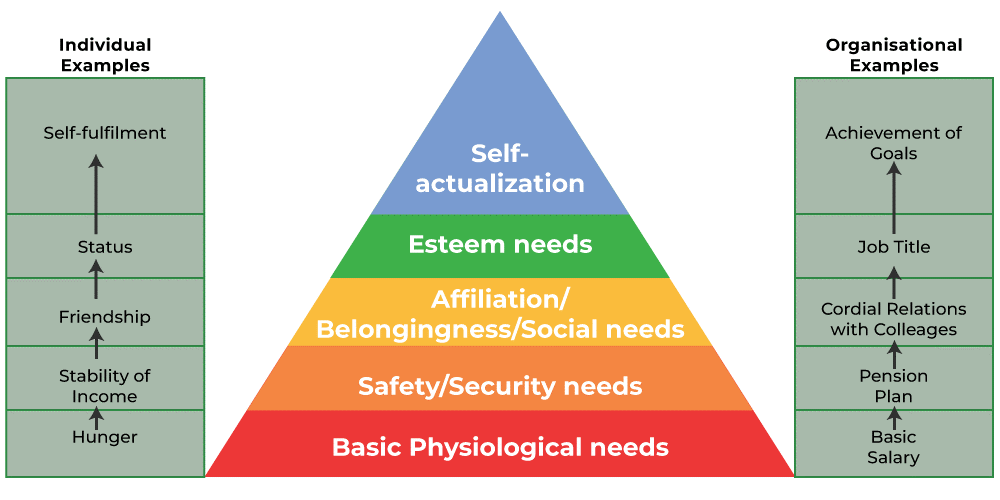Unlocking the Power of Employee Motivation in Effective Management
Question
Task: How can managers and organizations use motivational techniques to boost worker productivity, engagement, and retention, which will eventually lead to long-term growth?
Answer
1.0 Proficiency in management skills is indeed necessary in order to ensure holistic enhancement of employability skills over the period. An effective manager is a highly skilled individual and he has developed his proficiency in the strategic approaches that can be applied to motivate others. Referring to this information, the competencies involved in “motivating others” must be learned. Due to this, this paper aims to shed light upon the significant aspects linked to motivating others in support of a wide range of scholarly sources to ensure better understanding.
Application of theory
In accordance with the knowledge acquired when pursuing the learning modules, a manager must know the competencies that can be applied to motivating others (Maltseva, 2020). In addition, employee motivation is indeed essential in optimizing the "productivity of the organization". Precisely, it can be claimed that a motivated employee is a highly productive individual (Peng, Lee & Lu, 2020). Referring to this information, the concerned managers of an organization must introduce strategic motivation approaches for the employees in order to ensure the sustainable growth of an organization. In a nutshell, it can be claimed that motivation is the driving force that optimizes sustainable growth both for the employees and for the organizations.

As reflected in Maslow's theory of motivation, the term, “need” can be referred to as the elementary purpose that aims to be fulfilled by motivation (Poh et al. 2022). Acceptance of this concept is relevant both in the context of individual and organization. This is to be included in this relevance that a motivated employee is empowered to more contribute to attaining the shared goal of the organization. Precisely, motivation is focused to expedite the overall efficiency and accuracy of the employees in attaining a purpose-driven objective consistently.
Analysis With Reliable Sources
This is to be included in this context that a motivated individual reflects a self-directed approach to attaining significant goals. As per the information available at reliable sources, it has been identified that motivation generally involves consistent efforts, persistent and specific objectives (Fischer et al. 2020). In the context of organizational structure, managers put consistent efforts to motivate the employees in order to bring the best possible results in return in terms of productivity. In recent times, effective managers of organizations are focused to align the organizational objectives and the professional objectives of the employees altogether so that the employees feel highly motivated to attain the shared goal of the company as eventually the same can contribute to attaining their professional objectives simultaneously.
The information available at reliable sources has confirmed that motivated employees tend to work hard. Even, rewards, incentives, employee recognition, etc. are some of the factors that can significantly motivate employees in attaining the purpose-driven objective (Kitsios & Kamariotou, 2021).

Various aspects of employee motivation have also been unveiled in Herzberg’s two-factor theory as also depicted in the above diagram (Ganesh & Liu, 2022). As initially stated in this paper, enhancement or proper applicability of the motivating factors can optimize job satisfaction among employees. On the other hand, hygiene factors are linked to reducing job dissatisfaction as also mentioned in Herzberg's two-factor principle. In accordance with the information discussed thoroughly in this paper, motivating others is indeed significant in attaining a self-directed goal. Not only that, employee motivation enables them to initiate informed decision-making by creating hyperawareness. In addition, it is relevant to state that the employees who are motivated are more familiar with accepting organizational changes.
Recommendations
The information revealed in this paper has ensured the overall essentiality of "motivating others" as one of the significant management competencies. In any organizational structure, employee motivation is generally referred to as a strategic management practice that is directly linked to optimizing organizational betterment. This is to be included in this context that "employee assessment" is of utmost essential in order to reflect on the areas in which further improvement can be introduced (Barreiro & Treglown, 2020). Referring to this context, managers may adopt strategic initiatives to motivate the employees to appear in assessment. In the next phase, the effective managers of a company are required to unveil further improvement opportunities in front of the employees with an emphasis on the "areas of improvement". Apart from that, proper employee training can be offered. It is expected that well-designed employee training will enhance the professional skills of the employees and motivate them to attain shared organizational goals consistently over the period.
Conclusion
The managers must know how to motivate the employees. In this context, it must be included that motivated employees are prone to ensure employee engagement with the organization over the period. The same eventually leads to optimizing the employee retention scopes of an organization. Therefore, employee motivation is highly essential and the concerned authority of the organization must adopt strategic practices in hiring effective managers who are highly proficient with those competencies needed to motivate others.












